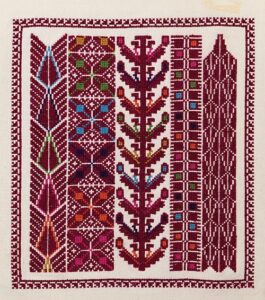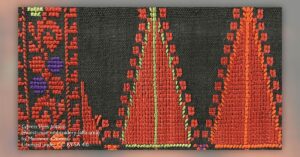My midterm assignment tries to emulate the work of Jackson Pollack, an artist whose work I really enjoy. I really enjoy abstract art, and I thought the idea of trying to emulate the strokes he makes through code could make for a really interesting midterm project. I like the idea of bridging the physical into the digital, which is another reason why I wanted to try this.
Currently, my program creates a series of lines that will travel randomly and vary in its stroke size. It creates the lines in segments, and will occasionally break the line and start in a new place. I have 3 of these objects, all in different colors, that will draw the segments. You can click on the screen to generate a new set of lines, replacing the old ones. The code for the line drawer can be seen here:
class Drawer {
constructor(seg, swScale) {
this.seg = seg;
this.swScale = swScale;
this.sw = width * random(0.0002, 0.005);
this.frame = width * 0.05;
this.angVary = PI * 0.02;
this.edgeBuff = height * 0.08;
this.lineLength = height * 0.001;
this.x = round(random(width));
this.y = round(random(height));
this.prevX = this.x;
this.prevY = this.y;
this.ang = random(PI * 2);
if (random(2) < 1) {
this.ang = PI * 0.25;
} else {
this.ang = PI * 0.75;
}
}
makeLines() {
for (let i = 0; i < this.seg; i++) {
this.ang = this.ang + random(-this.angVary, this.angVary);
this.x = this.lineLength * sin(this.ang) + this.x;
this.y = this.lineLength * cos(this.ang) + this.y;
if (
this.x > width ||
this.x < 0 ||
this.y > height ||
this.y < 0
) {
this.ang += 0.2;
}
this.sw += width * random(-0.00003, 0.00003);
this.sw = constrain(this.sw, width * 0.0001, width * 0.009);
strokeWeight(this.sw * this.swScale);
line(this.prevX, this.prevY, this.x, this.y);
this.prevX = this.x;
this.prevY = this.y;
if (random(1000) < 1) {
this.sw = width * random(0.0002, 0.005);
this.x = round(random(width));
this.y = round(random(height));
this.prevX = this.x;
this.prevY = this.y;
this.ang = random(PI * 2);
if (random(2) < 1) {
this.ang = PI * 0.25;
} else {
this.ang = PI * 0.75;
}
}
}
}
}
Creating this object was the most difficult part so far. I was trying to figure out ways to make the lines move randomly but not too erratically. After much trial and error, I managed to make some numbers that looked good to me.
My next steps are to add the paint blobs, which I think could be the hardest part, because I want them to be misshapen. After that, I can work more on the interactivity by adding such things as ways to modify the amount of lines made. I also want to add more layers, because right now there is a lot of empty space and I want to minimize that at bit more. Adding more layers will also make the pieces look more interesting and make them look more like a Pollack piece, which has countless layers of paint on them. The last part I intend to do is work on is adding more colors, I am perhaps thinking about using random colors, but I am unsure how this will end up looking.













